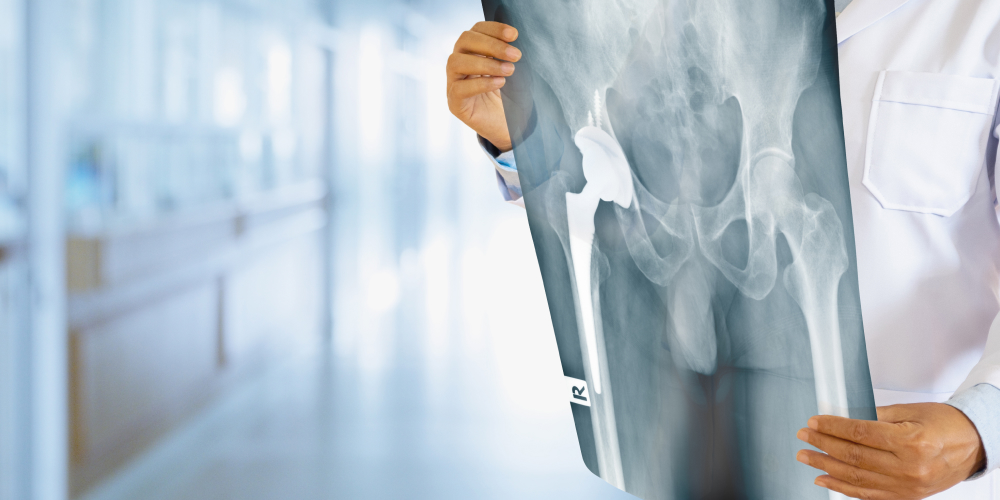I often get asked by patients and their loved ones a lot of questions related to planning for hip replacement surgery and its recovery period:
- How can I prepare?
- What are the challenges that I should expect post-surgery?
- Will I need a caregiver, and if so, for how long?
While responses may vary depending on the individual, here I will explain what can generally be expected from someone undergoing total hip replacement at Sri Balaji Hospital.
Total Hip Replacement- Your Questions Answered
Will the procedure be painful?
While the procedure itself is 100% painless when performed, even with the patient fully conscious, oriented, and comfortable, pain management after a total hip replacement is vital. Post-operative pain relief extends beyond mere injections of painkillers or sedatives. Personally, I believe that effective post-operative pain relief begins in the operating room during the procedure itself. This involves gentle yet precise handling of soft tissues, along with pain relief measures coordinated with our anaesthetist immediately after surgery. These measures help minimise the need for significant amounts of painkillers immediately after the procedure.
How long will I have to stay in the hospital after the procedure?
Most patients can commence walking and be discharged within 2 or 3 days post-surgery. Bed rest is typically unnecessary. In fact, I encourage patients to get out of bed and start moving within 6-8 hours after the procedure. This early mobilisation aids in the immediate adaptation to the new joint and prevents stiffness, thereby reducing pain levels.
Patients with severe preexisting conditions, such as severe heart or lung conditions, may require a slightly extended monitoring period. Consequently, they might need an additional day or two before being discharged.
Should I use a walker for support after the procedure?
Yes, I recommend the use of walker support during the initial period of 5-10 days while the patient adjusts to their new joint. This helps improve the patient's confidence in walking without fear. On average, I would recommend discontinuing the use of walking support within 3-5 days after surgery.
The stitches from hip surgery- when can I expect it to heal?
The incisions for hip replacement surgery nowadays are very small, offering several advantages such as:
- Reduced pain compared to traditional approaches.
- Decreased blood loss during the procedure.
- Enhanced efficiency in post-surgery healing.
- Significantly lowered risk of infection.
The incision is covered with a dressing and typically takes about 10 to 12 days to heal. During this time, the surgical site will be protected with a thin plaster, allowing the patient to resume normal activities while adhering to any specific instructions provided regarding do's and don'ts. The wound is monitored periodically, either in person at the hospital or through home dressings. Once the wound is deemed healed, stitch removal is performed between days 10 and 14, which is a quick and painless process lasting about 2 minutes. Following stitch removal, no specific wound care or plasters are required.
When is post-operative rehabilitation/ physiotherapy started, and how difficult is it?
As mentioned earlier in this blog, initiating physiotherapy and rehabilitation as soon as possible yields better outcomes. Therefore, I prefer to commence walking for the patient within 12-24 hours after surgery, followed by physiotherapy/rehabilitation within 48 hours. Our team of doctors and physiotherapists simplifies the rehabilitation program so that by the time of discharge (usually within 3-5 days post-surgery), the patient is made very comfortable and often does not require any specialised physiotherapy or additional intervention postoperatively.
When can I resume my regular activities after the surgery?
The objective of physiotherapy/rehabilitation is to facilitate your return to normal life as soon as possible. I usually impose minimal to no restrictions following hip replacement. However, the time it takes to resume specific activities may vary depending on their level of strain or exertion:
Riding a 2-wheeler: 6 weeks
Driving a 4-wheeler: 4-6 weeks. Since you underwent surgery on your right hip, it may take up to a month before you can safely resume driving.
Work:
Desk job: 2 weeks.
Heavy lifting job/ manual labour: If your job involves heavy lifting or is physically demanding on the hips: 6 weeks.
Sports:
For sports that involve minimal physical activity, such as golf: 2 weeks.
For sports involving high-impact contact: 6 weeks
Jogging: 6 weeks.
Gym activity: 6 to 12 weeks.
What is the expected lifespan of my hip replacement implant?
In contrast to older implants made solely of metal components, the contemporary hip prostheses I favour incorporate a blend of metal, highly cross-linked polyethene, and ceramic parts. This composition not only yields lighter-weight hips but also improves durability. Typically, these implants can endure for 20 to 30 years, subject to variables such as usage, wear and tear. Furthermore, the likelihood of failure and the need for subsequent surgeries are minimal.
How long should I wait after replacing one hip before replacing the other?
If you require replacement of both hips, it can be performed simultaneously in one surgery, provided your health or other co-morbidities permit, as determined by our pre-operative evaluation team at Sri Balaji Hospital. This approach may offer enhanced safety and quicker recovery for some patients.
Opting for a double hip replacement reduces the risk of complications and shortens the recovery time compared to having both hips replaced in separate surgeries. However, the post-operative effort during physical therapy and rehabilitation may be more intense after a simultaneous double hip replacement, as both legs need to be strengthened concurrently. Suppose you choose to schedule your double hip replacement as two separate surgeries. In that case, I typically advise waiting at least 6 weeks after mastering physical therapy and rehabilitation for the first hip before proceeding with the second hip. This timeframe also allows your body's blood parameters to return to normal, reducing the risk of complications such as blood transfusion or blood clots (DVT).
Your Path to Mobility - Sri Balaji Hospital, Chennai
Sri Balaji Hospital stands out as a beacon of excellence and innovation in the field of hip replacement surgery in Chennai. With our comprehensive approach to patient care, state-of-the-art technology, and a team of highly skilled professionals, we ensure that every aspect of your hip replacement surgery—from pre-operative planning to post-operative rehabilitation—is managed with utmost precision and care. If you're considering hip replacement surgery, look no further than Sri Balaji Hospital, the leading multi-speciality hospital in Chennai.

